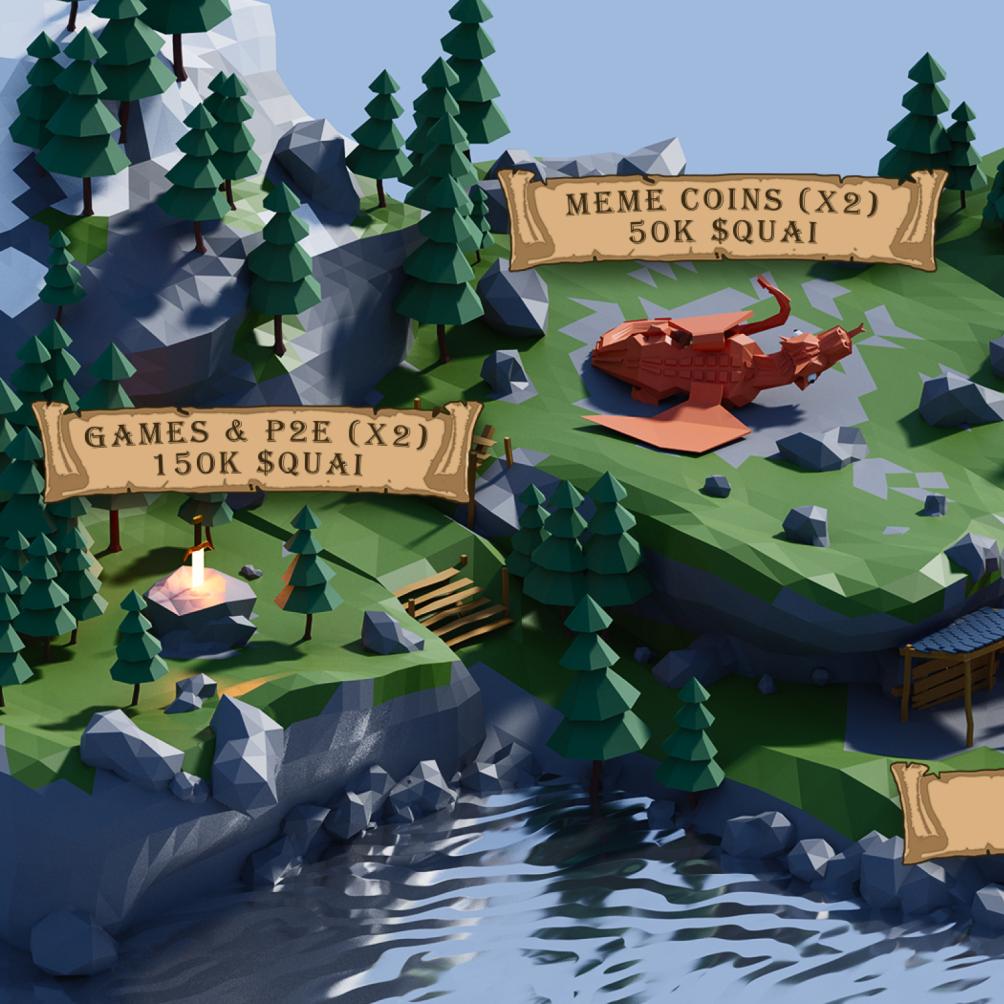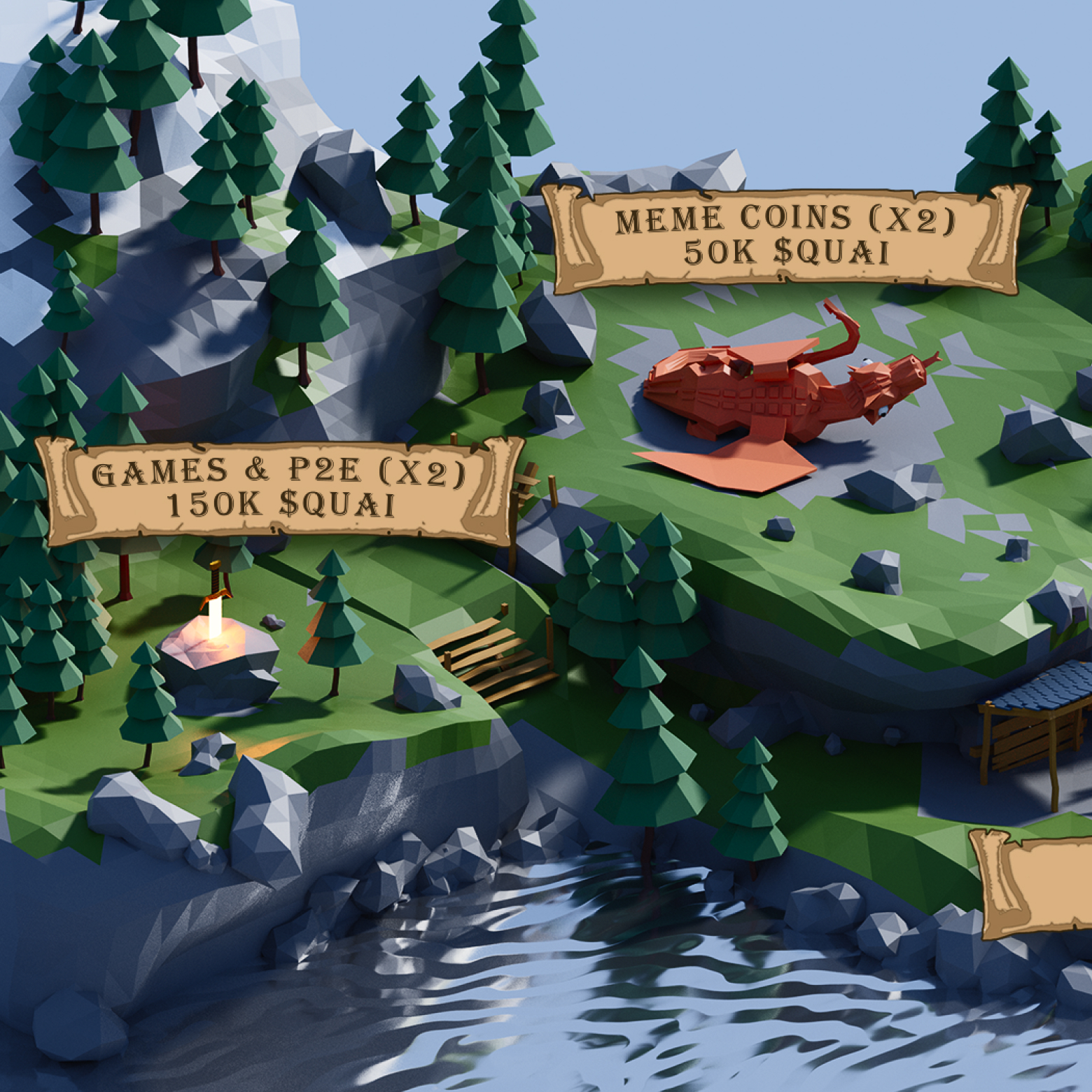
A few keen-eyed members of Quai Nation have noticed some unusual patterns in our Testnet Developer Rewards graphic. Welcome to Quai Quest.

With our Iron Age announcement on June 21st, we released the rewards schedule that challenges both miners and developers to support the Quai ecosystem throughout the Iron Age Testnet. The first Quai Quest was buried within the graphic outlining developer rewards.
The winner of the first Quai Quest competition obtained a prize of 1 ETH, and the following 9 winners received an exclusive “Cipher Slayer” role in the Quai Discord server. Now that the competition has concluded, we are excited to release a walkthrough of the first Quai Quest.
The first Quai Quest began upon the release of the Iron Age Testnet Developer Rewards.

1. From the initial message, individuals quickly connected Glaucon and Socrates’ conversation to Plato’s legendary Analogy of the Cave. Upon closer inspection of the cave in the image, a ciphertext can be extracted. The ciphertext reads “jyy[d”\wiso/yu[rgpt,/vp,\yp\EJ2sS5s9″. Using a right keyboard shift, the plaintext of “https:/quai.typeform.com/to/WH1aA4a8” can be revealed. This plaintext revealed a Typeform link, the first clue of the quest.

2. Upon reaching the Typeform, the user is prompted to input the first password. By interpreting the given hint about swaying foliage, questers identified 4 letters hidden in the trees.

These letters, when extracted, spell “JIAN.” A jian is a type of Chinese sword, directing questers to the next puzzle. “JIAN” was the first password.
3. The next puzzle is located at the sword in the stone. A series of strange symbols are glowing on the blade.

These patterns were identified by questers as a Templar’s Cypher. Decrypting the cipher reveals the plaintext “LITEPAPER.” “LITEPAPER” was the second password.
4. After obtaining the LITEPAPER clue, a hint directed questers to approach and fight the dragon. The dragon is surrounded by gravestones covered in Roman Numerals.

Extracting the Roman Numerals from the gravestones gives the following ciphertext:
V * XVI * IV * I
II * VI * IV * XII
IX * VII * V * III
VI * XXVII * III * VII
IV * XXXIII * VI * VII
Converting the Roman Numerals to Arabic Numbers gives the following:
5 * 16 * 4 * 1
2 * 6 * 4 * 12
9 * 7 * 5 * 3
6 * 27 * 3 * 7
4 * 33 * 6 * 7
Using the previous password “LITEPAPER,” it can be reasonably assumed that this cipher is a variation of an Ottendorf (book) Cipher, using the Quai Network Litepaper as the key.
The cipher can be decoded using:
Page * Line * Word * Letter
Using the Quai Network Litepaper as the key, the plaintext of “BEACH” can be revealed. “BEACH” was the third password.
5. After revealing the password “BEACH,” questers began more closely analyzing the shoreline in the image.

The pattern of sticks and rocks can be relatively quickly recognized as binary code, with sticks representing 1s and rocks representing 0s. Using this key, the following can be revealed:
1001 0001 0000 0001
Decoding the binary reveals the following numbers:
9 1 0 1
This number (9101) is the chain ID of Quai Network’s Cyprus 1 chain.

The final password was “CYPRUS1”.
Entering the final password allowed the winner to claim their prize of 1ETH, and for subsequent winners to claim the limited “Cipher Slayer” role in Discord.
Keep an eye out for more Quai Quests in the future.
Join us to build a better blockchain.
Quai Network is an open-source Proof-of-Entropy-Minima blockchain network utilizing the capabilities of merged mining to increase throughput and security. Users of Quai Network will enjoy fast transaction times without compromising decentralization and security. Miners will have competitive mining opportunities across the many blockchains within the network.
Capable of thousands of transactions per second, the Quai Network is a new solution to scalability that is soon to be ready for mainnet release.
Terms & Conditions / Disclaimer
The entirety of the Quai Genesis grants program, including the content of this article, is subject to the Terms and Conditions outlined here.
Opinions, ideas, and statements shared in this update are delivered with numerous assumptions, risks, and uncertainties which are subject to change over time. There are multiple risk factors, including those related to blockchain, cryptographic systems, and technologies generally, as well Quai’s business, operations and results of operations, that could cause actual results or developments anticipated not to be realized or, even if substantially realized, to fail to achieve any or all of the benefits that could be expected therefrom. We reserve the right to unilaterally, completely, or partially change plans, expectations, and intentions stated herein at any time and for any reason, in our sole and absolute discretion, and we undertake no obligation to update publicly or revise any forward-looking statement, whether as a result of new information, future developments, or otherwise. ACCORDINGLY, WE RECOMMEND THAT YOU DO NOT RELY ON, AND DO NOT MAKE ANY FINANCIAL DECISION OR INVESTMENT BASED ON, THE STATEMENTS CONTAINED IN THIS UPDATE OR ANY OF OUR UPDATES/ARTICLES — INCLUDING BUT NOT LIMITED TO ANY SELLING OR TRADING OF QUAI TOKENS, ETHER, OR ANY OTHER CRYPTOGRAPHIC OR BLOCKCHAIN TOKEN, OR THE SECURITIES OF ANY COMPANY.
The views, opinions, and statements made in this update are those of an individual author and not those of any institution, University, or legal entity operating within the jurisdiction of The United States or beyond. There is no association between these views, opinions, and statements and any for-profit or non-profit entity, particularly with Universities, Foundations, and other Agencies located within the United States. Any perception of such an association is purely accidental, and will be rectified immediately if brought to our attention by the reader.
